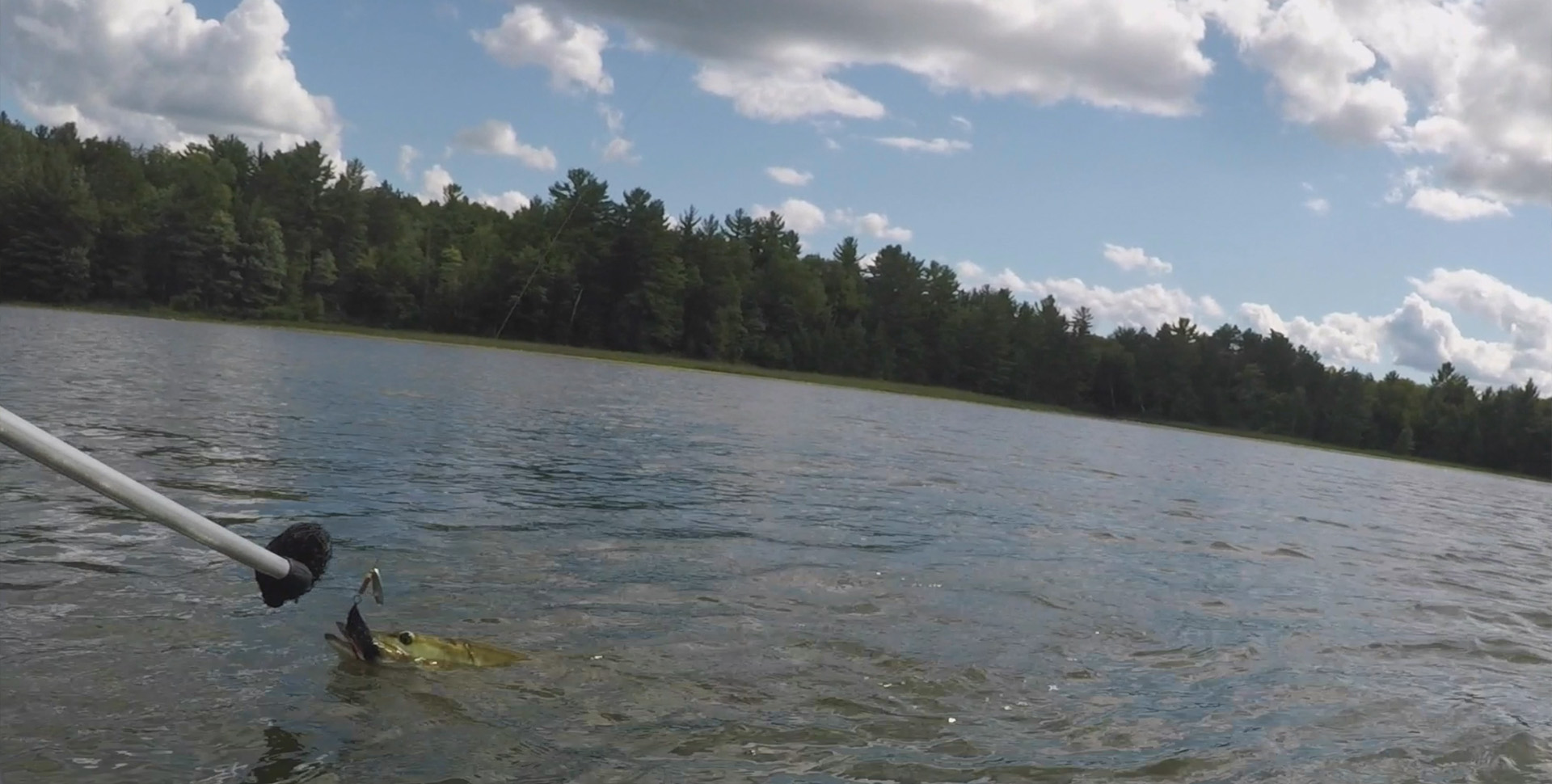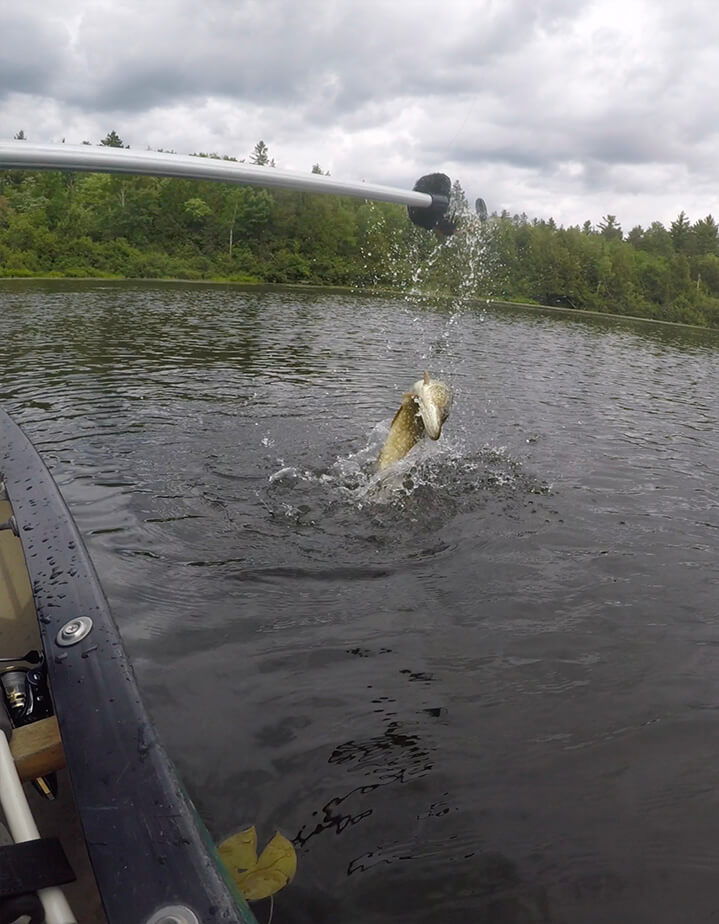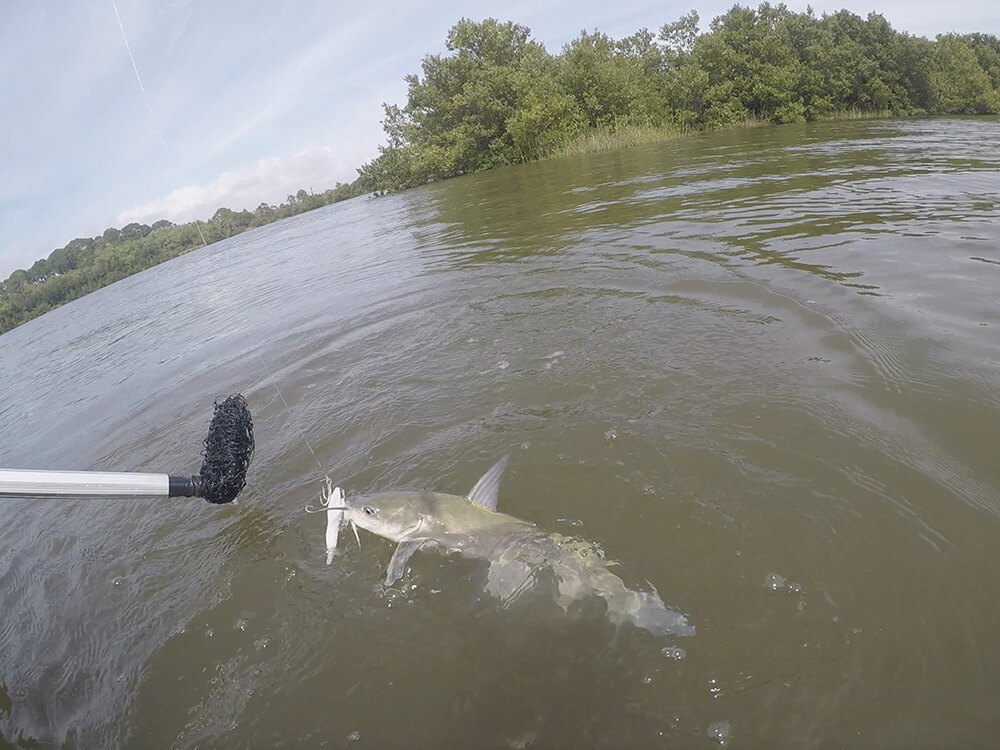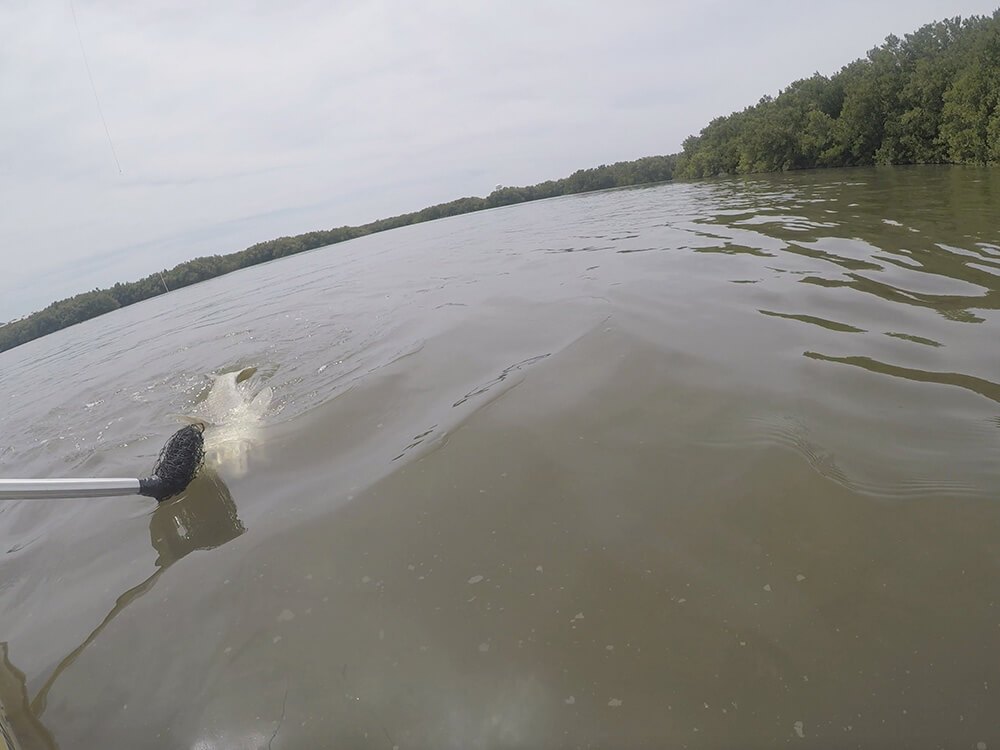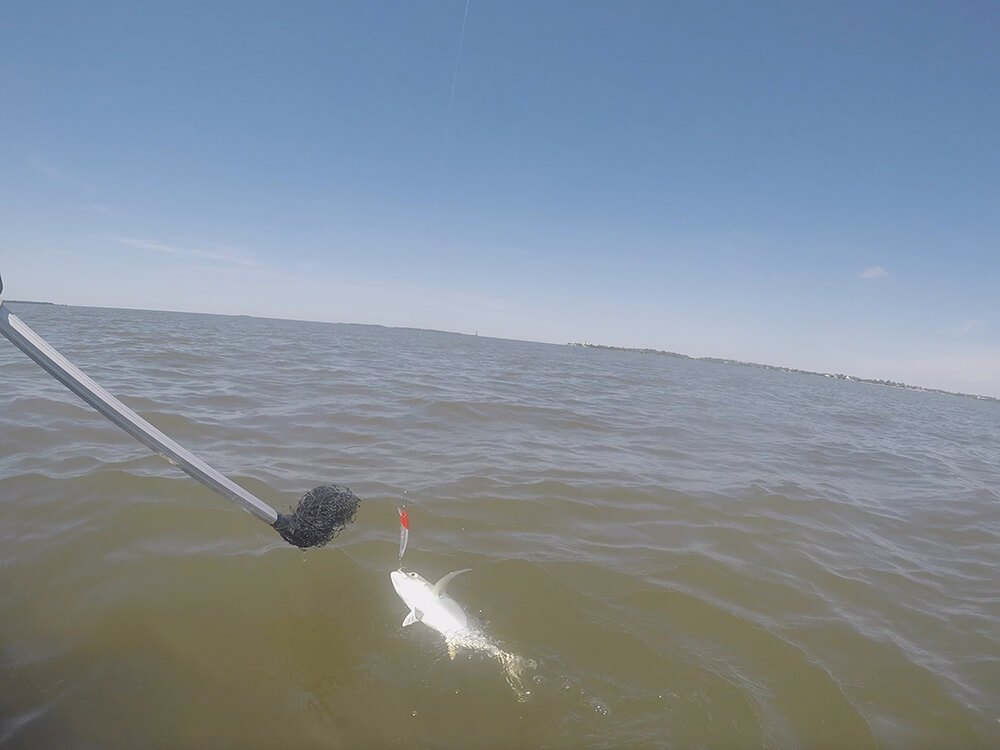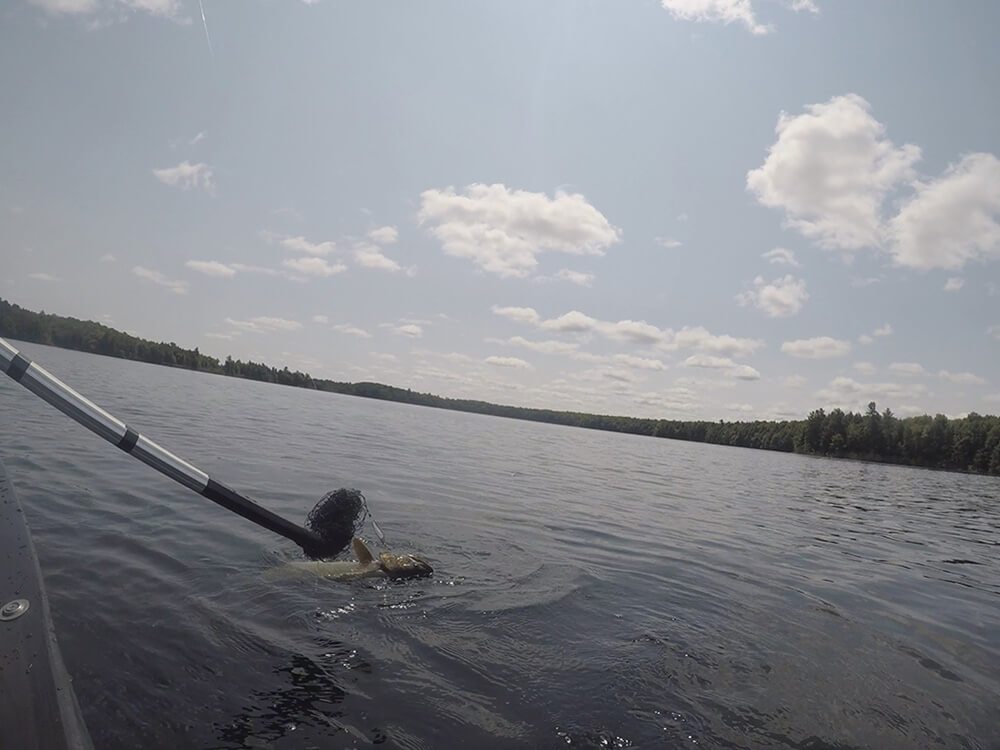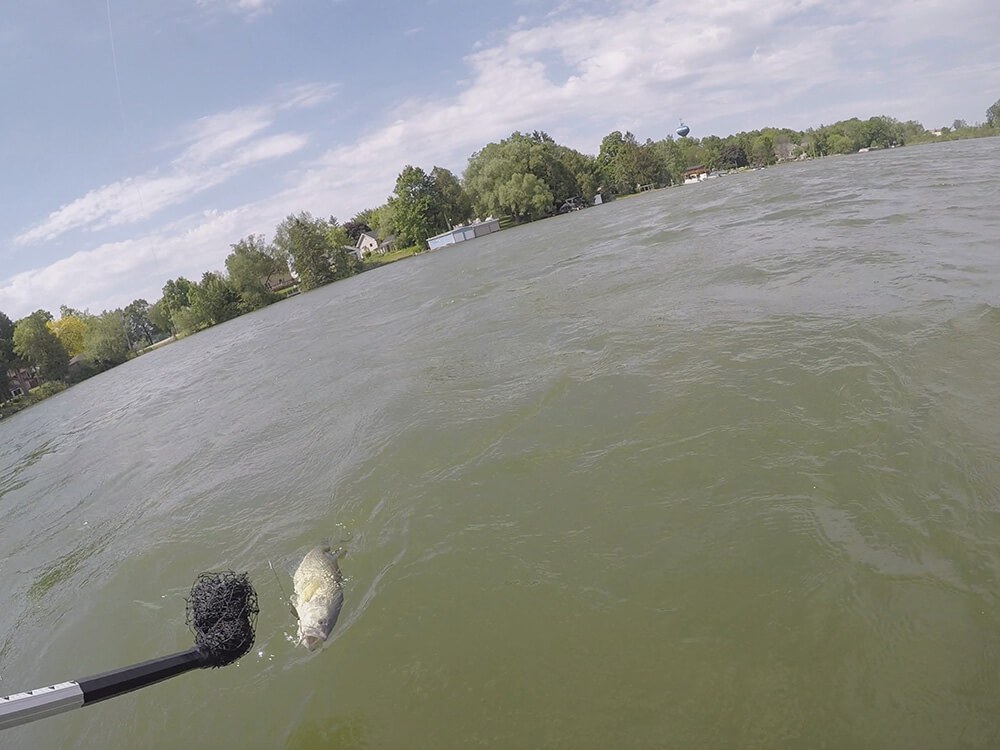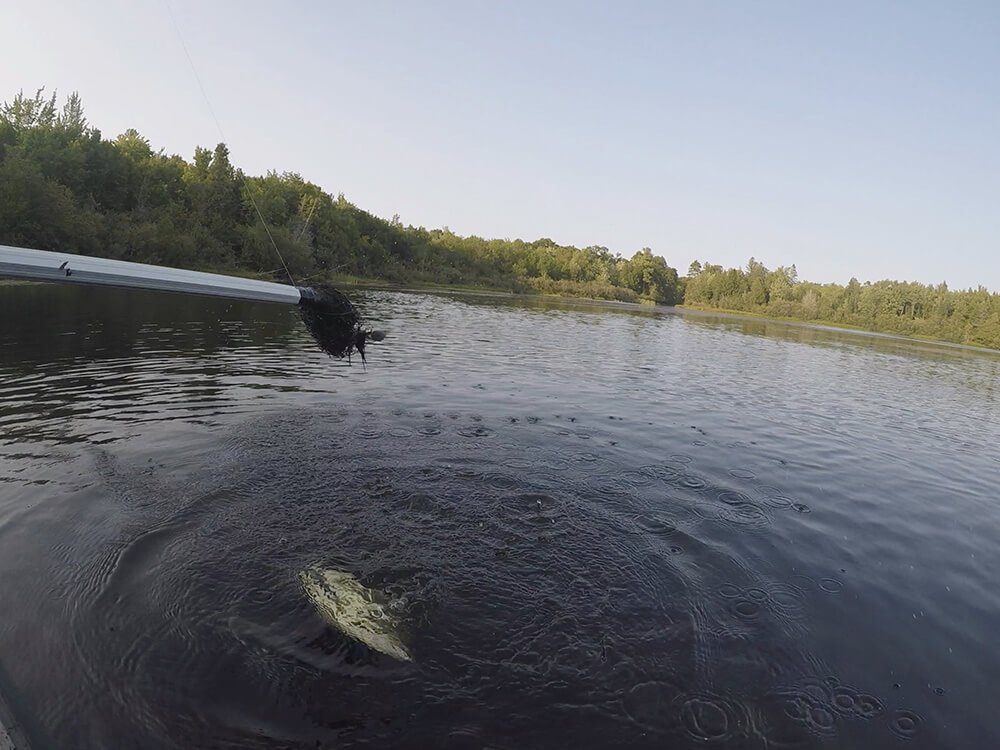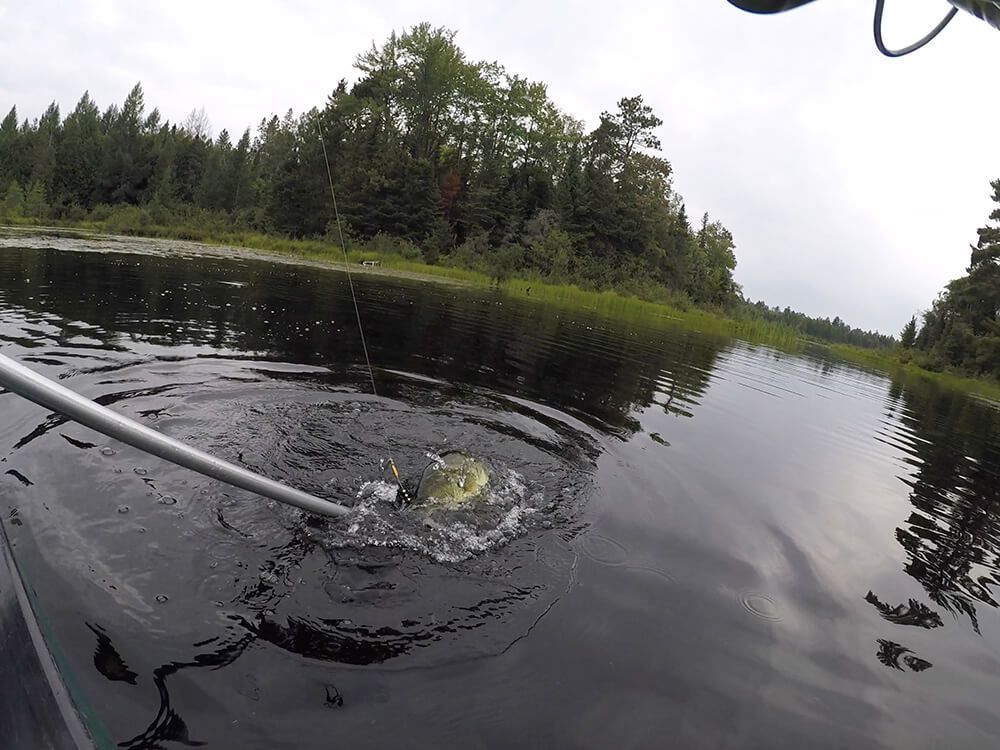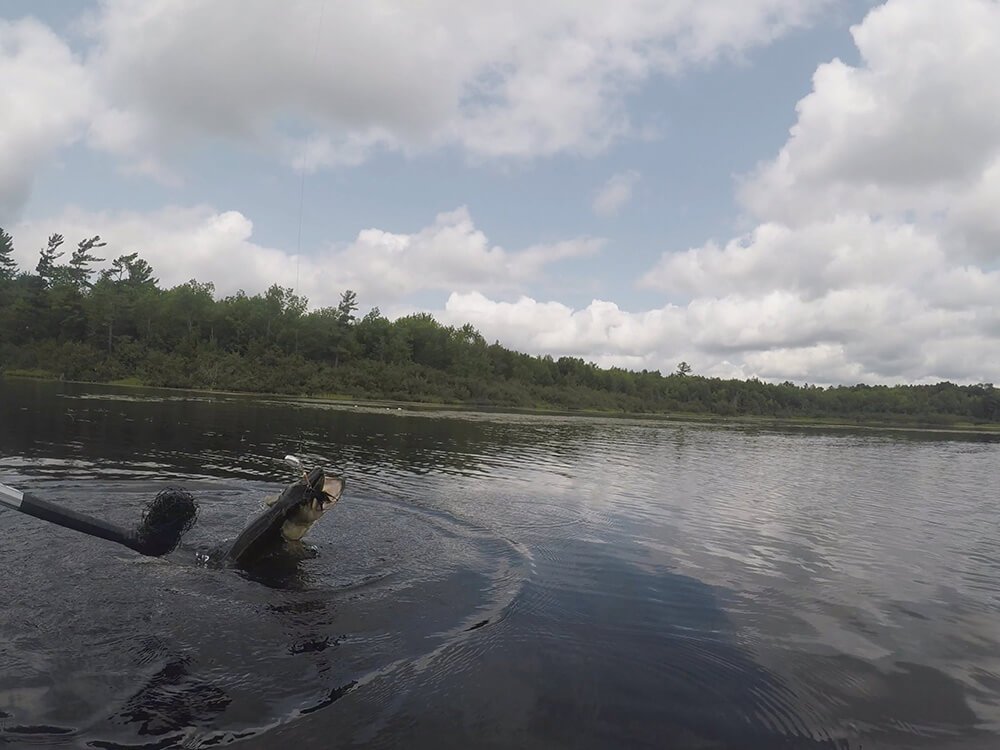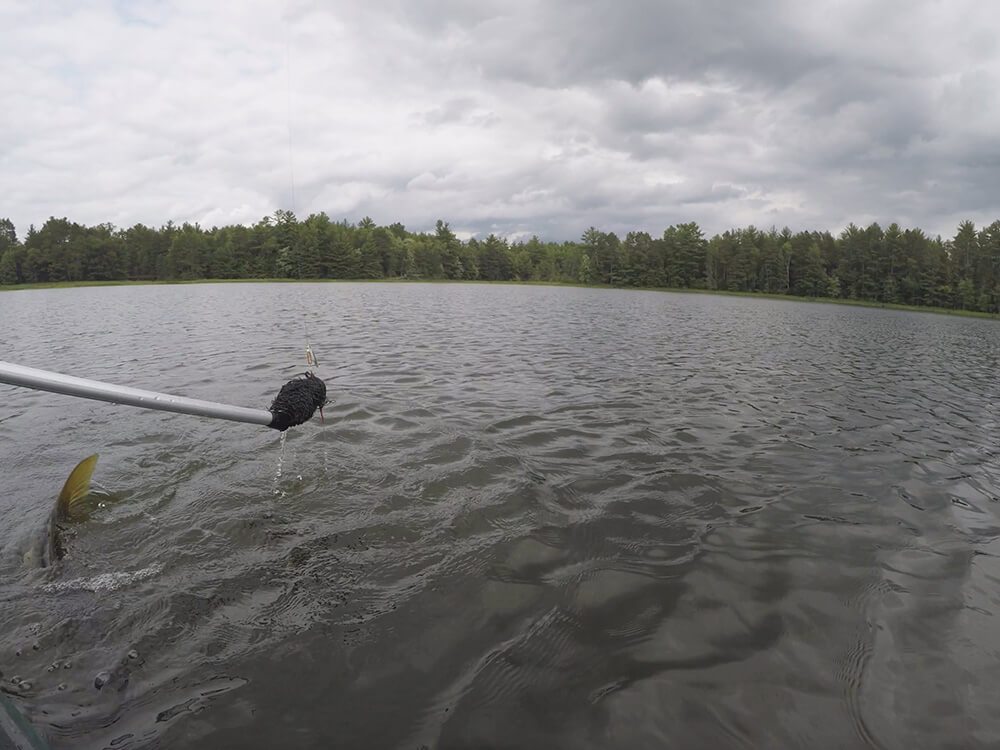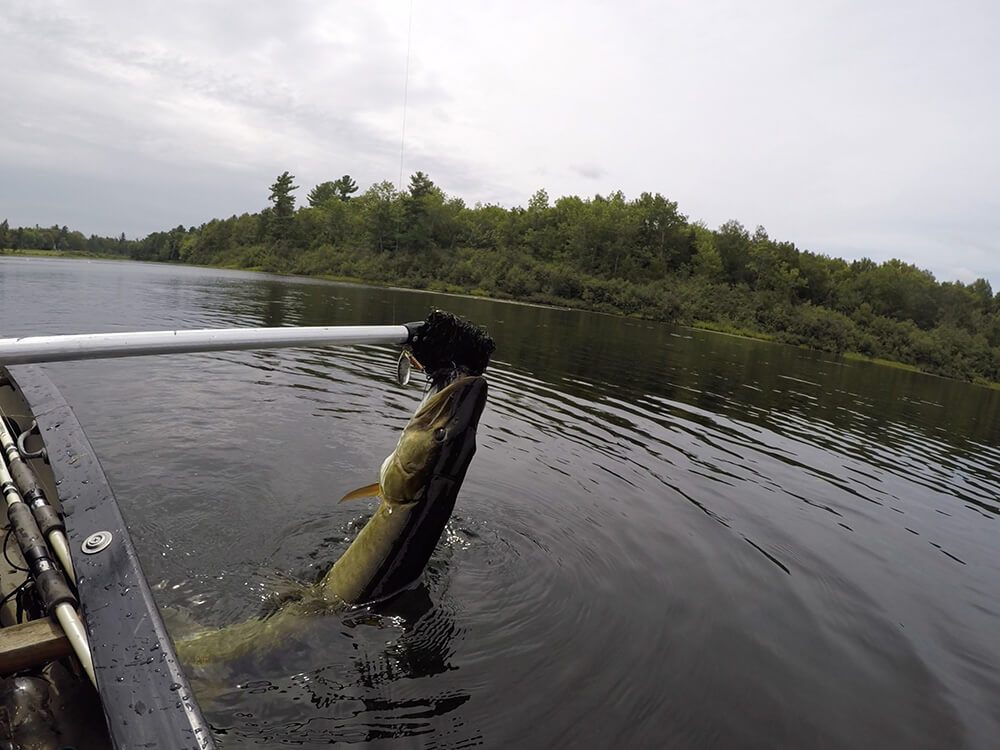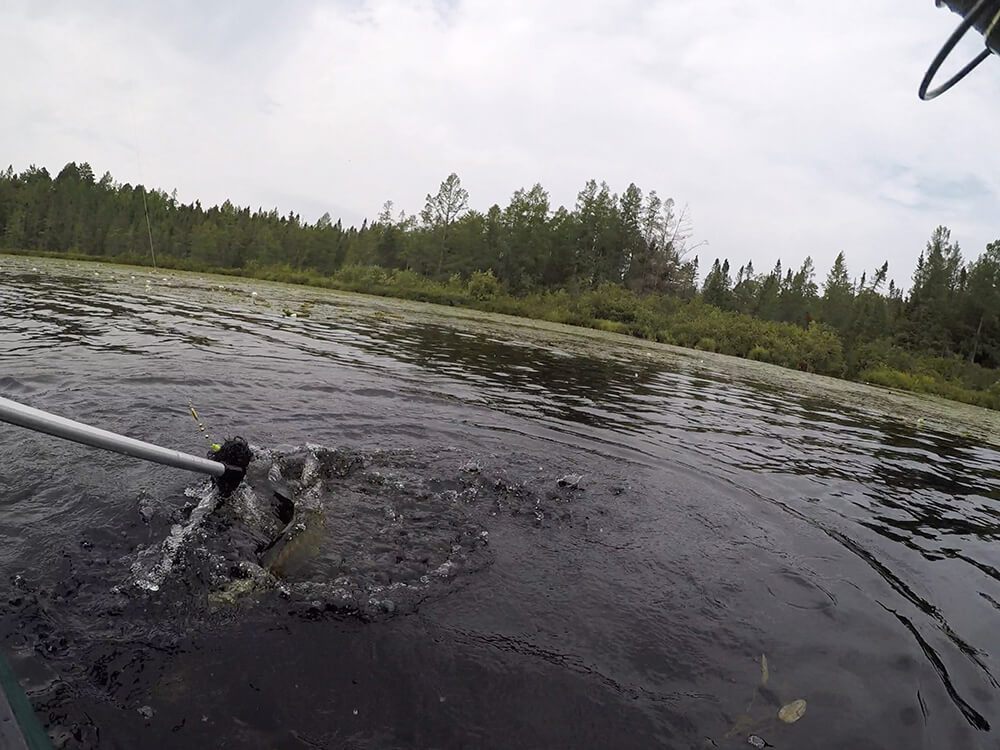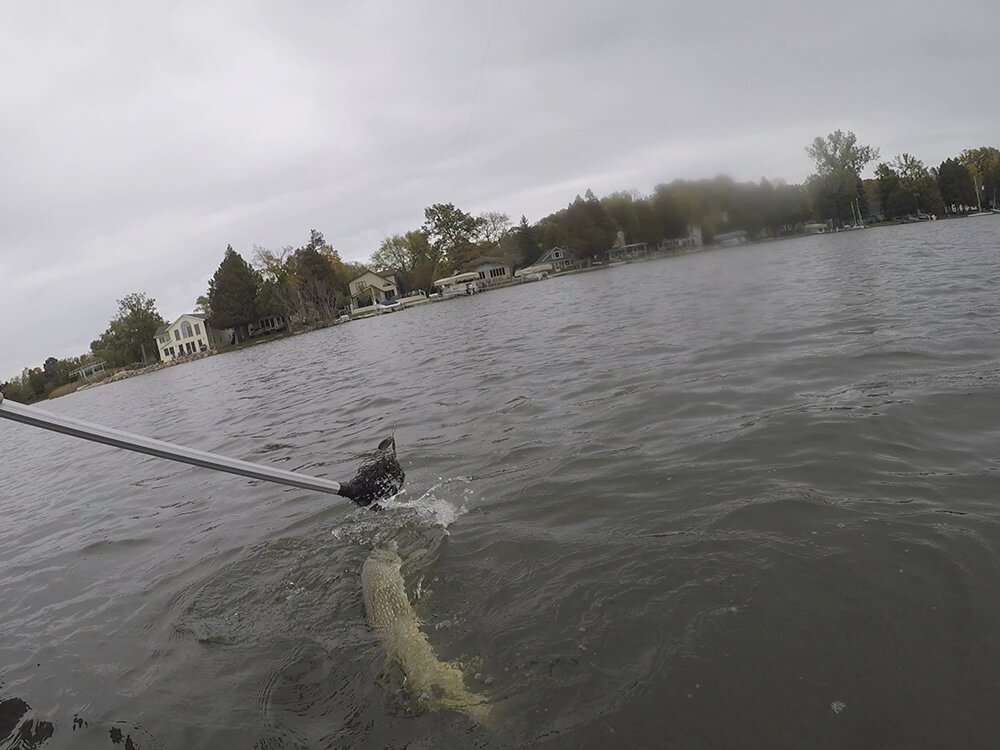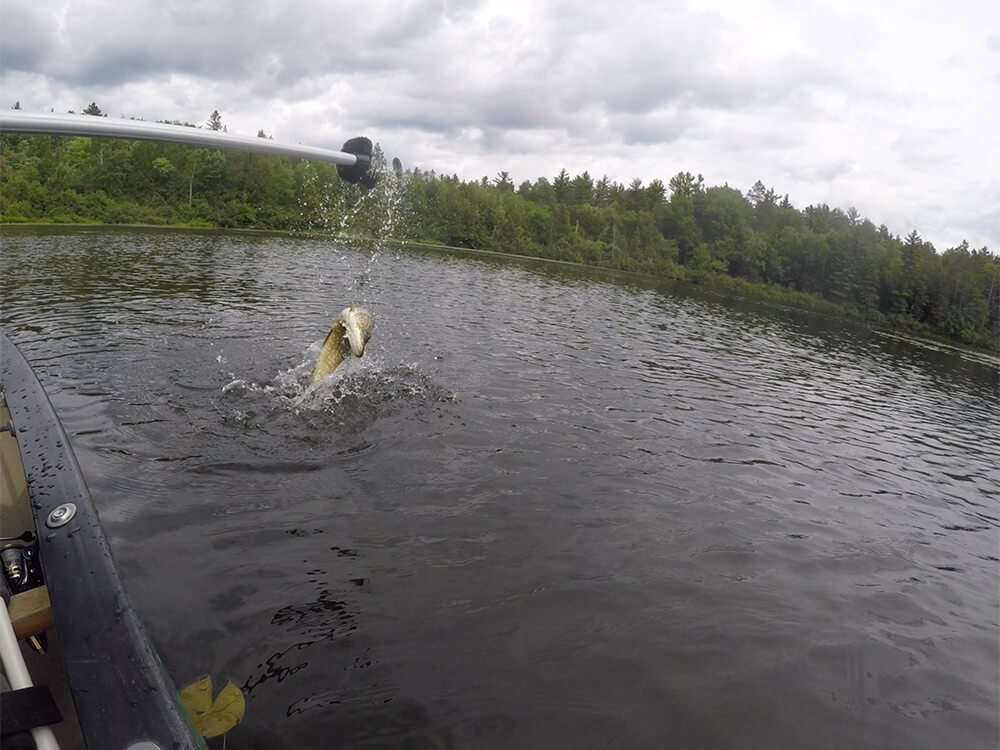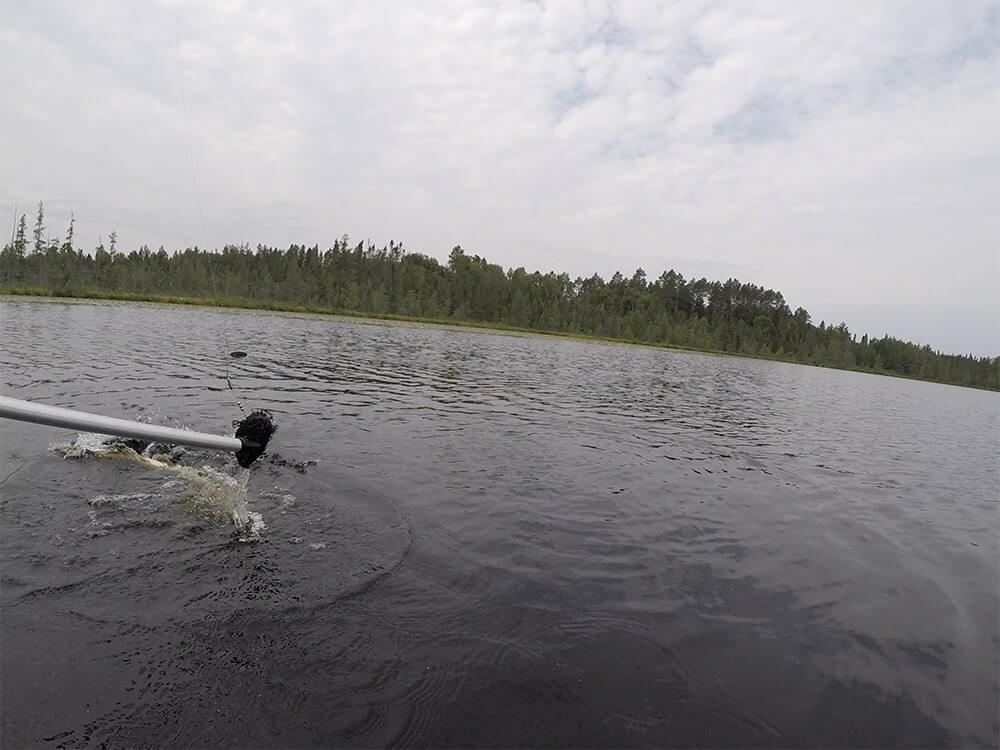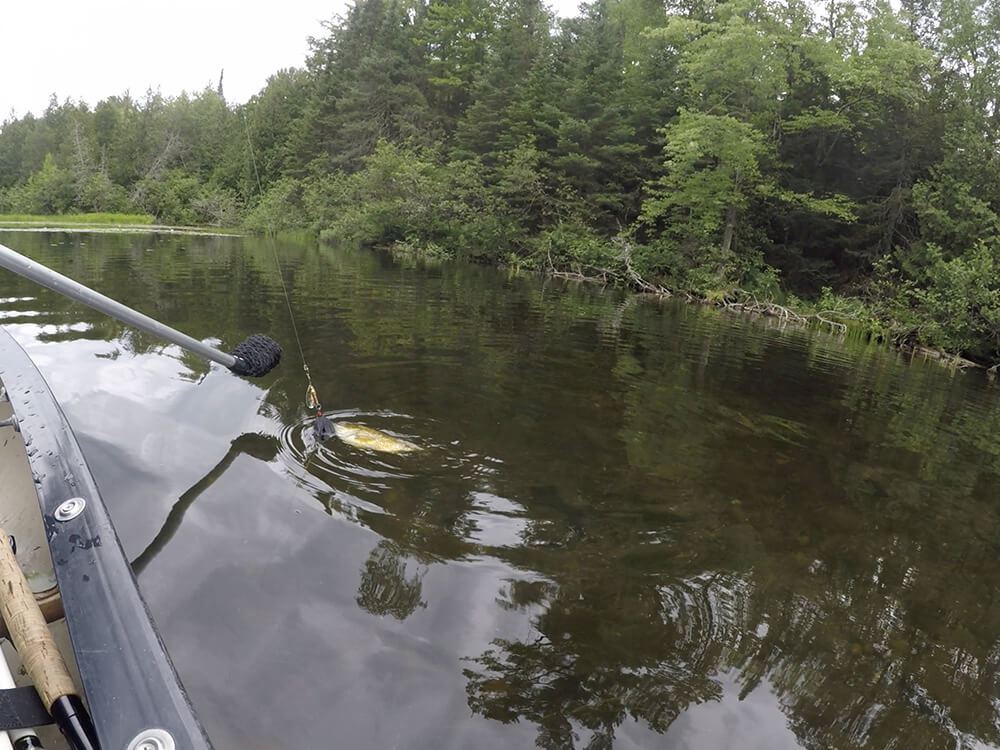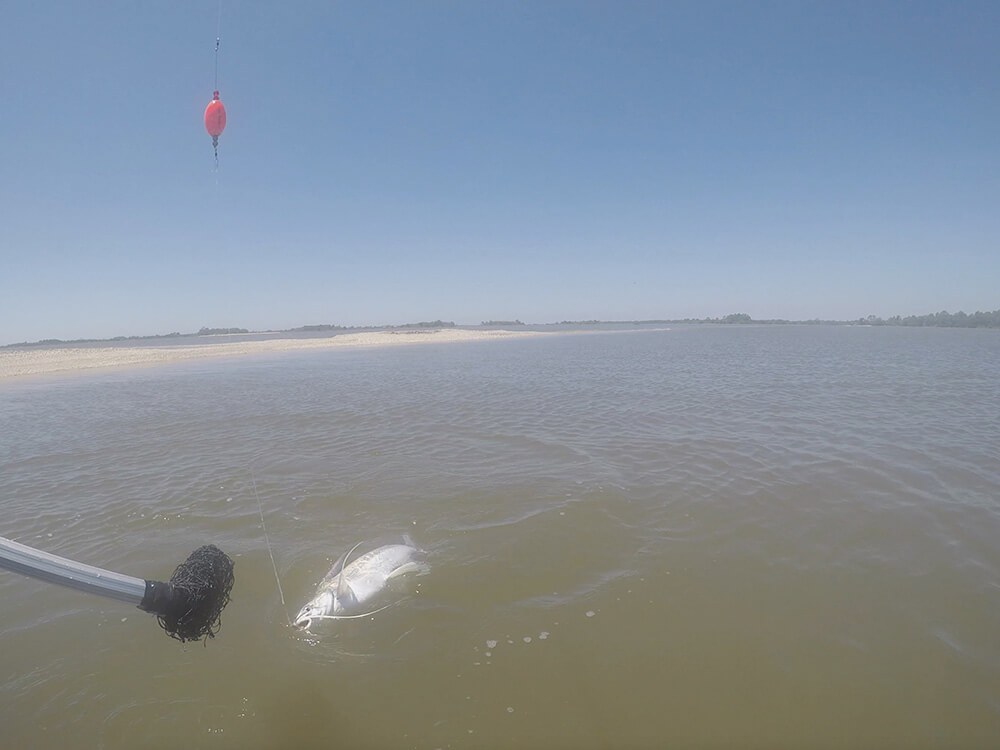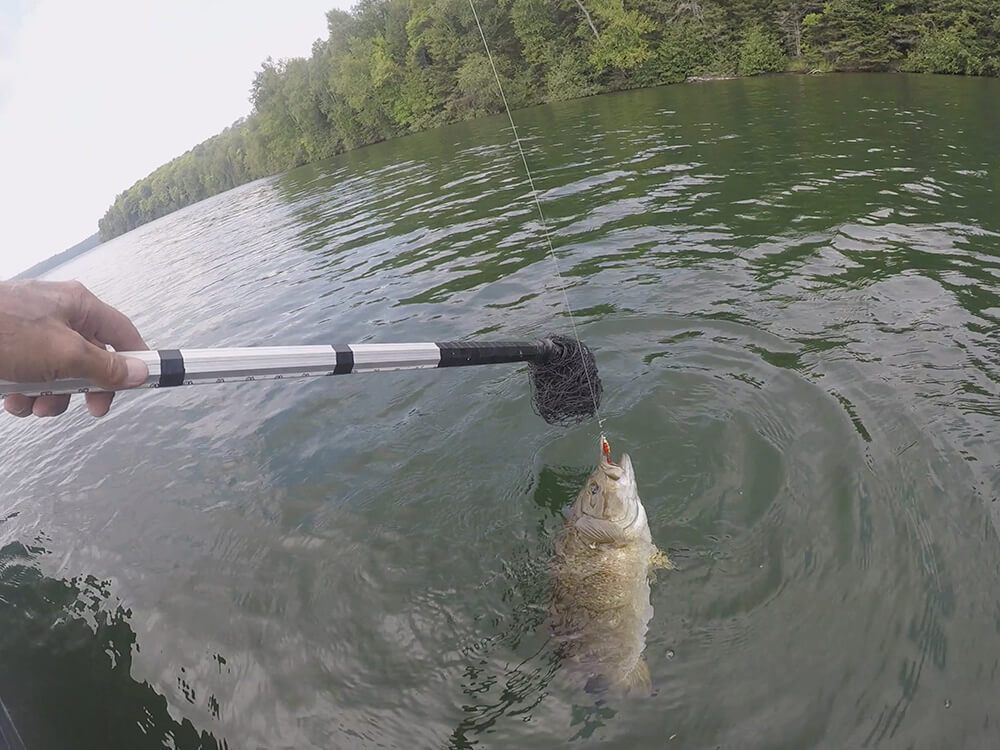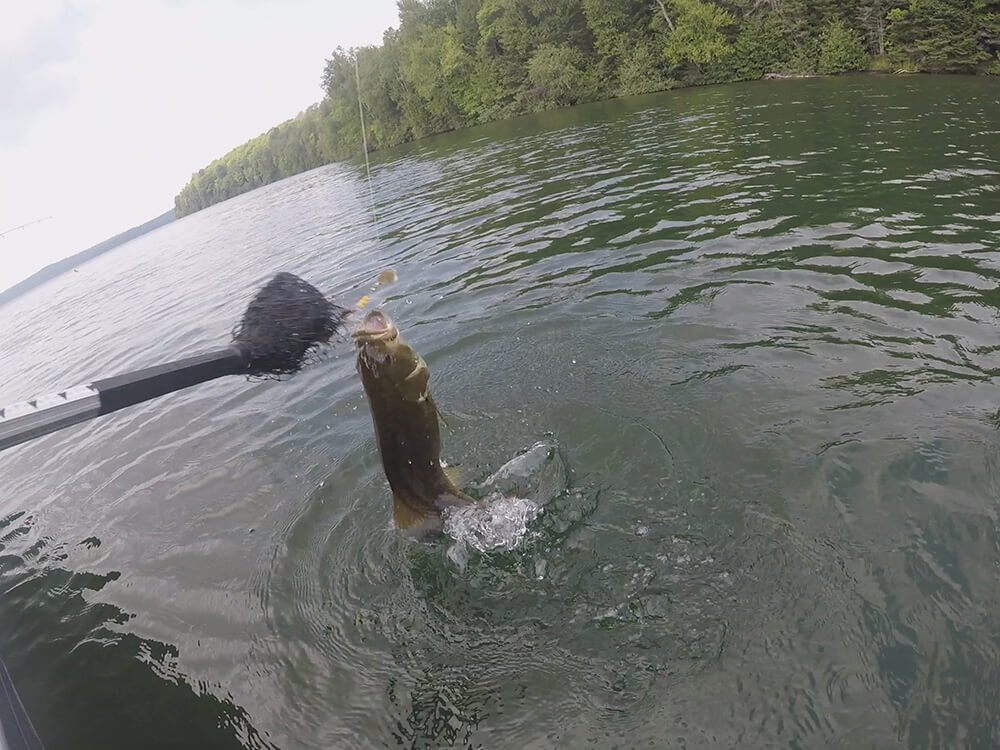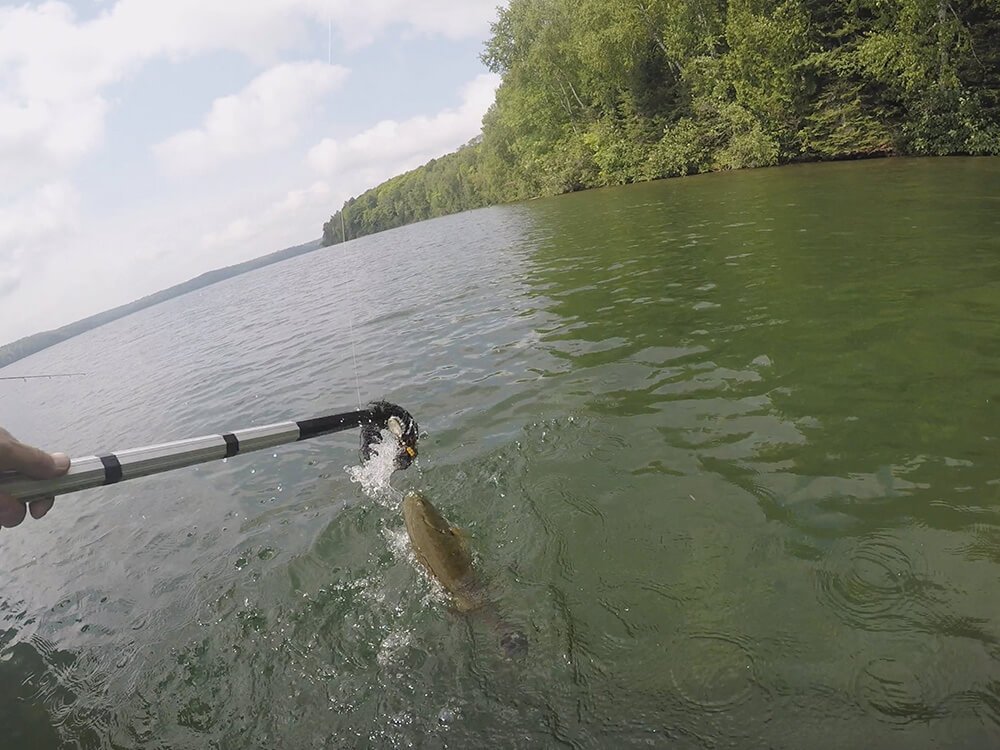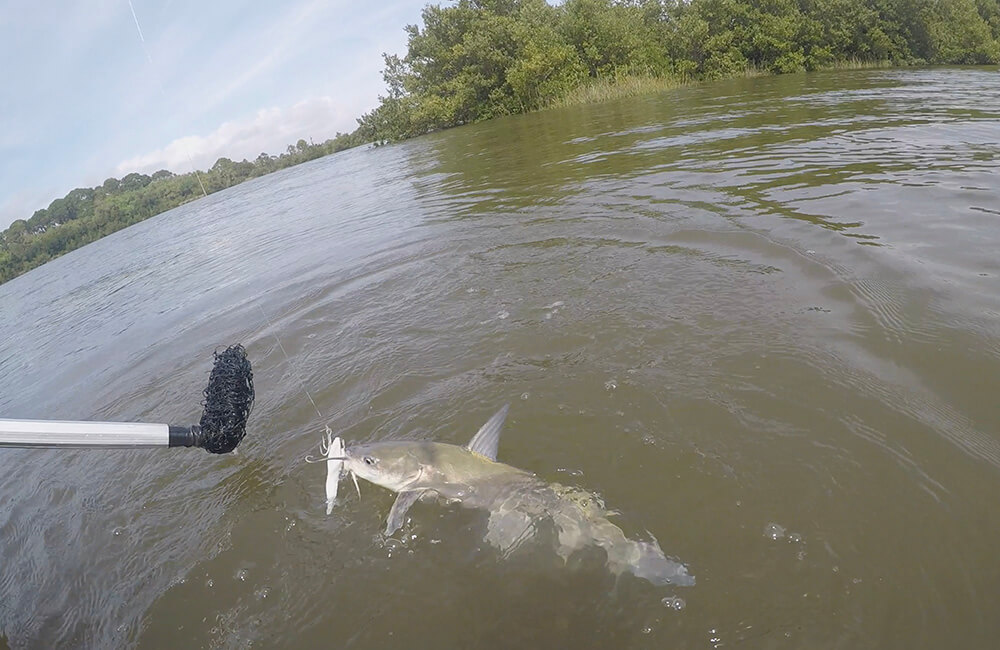Genesis of The Catch and Release Stick:
Hypothetical: Let us envision a scenario in which you are in fact the inventor of the Catch and Release Stick. Perhaps you might have come up with the idea after an event like this:
We propose that you are a committed muskie fisherman from Appleton, Wisconsin. Your favorite water is the Eagle River chain in northern Wisconsin, just south of the border with upper Michigan. You have cabin at Catfish Lake on the chain, and you and your wife Jeanie often spend long weekends up there. You don’t have kids yet, but the two of you are looking to start soon.
Unfortunately, Jeanie has an older brother, Malcolm, and he is coming to visit you up north. This means taking Mal muskie fishing and you are not looking forward to that. It turns out that he is a professional bass tournament fisherman from Texas and thus an expert on everything fishing. He’s never gone after muskies, but could that be much different? And he’s only got one day to fish in Wisconsin since he has a gig in Oklahoma coming up. The weather forecast doesn’t look promising for muskie fishing, and you have a bad feeling about how this is going to turn out.
He shows up Friday evening and you take him out on the chain early the next day. As you had feared, most of the day doesn't go well at all. Whatever cloud cover there had been in the morning has long since burned off leaving bright sun and bluebird skies behind. The muskies have apparently taken to lying in the weeds with their fins over their eyes. And Mal certainly isn’t impressed. Even so, he has taken to the muskie tackle very well – it being just a size upgrade from his typical bass outfits. In fact, he’s doing nicely casting the big muskie bucktails the two of you are using. But the fish are not cooperating. Not a strike or even a follow for those hours and hours of casting.
However, about 5 pm or so, when the sun has finally descended a bit, you throw a little too close to the weed edge and get hung up. But then the “weeds” give a couple of pulls back and you know you are on. From the lack of wiggle, you realize it’s a pretty good one. A muskie for sure.
Mal seems dumfounded at first. After all those fruitless hours, he’s come to believe that muskies are just a myth. Now he isn’t sure what to do. He watches as you carefully turn the fish and bring it in closer to the boat. Then he springs into action - he grabs the huge muskie net that he’s been eyeing doubtfully all day and waits for his chance. The fish is still 3 feet away when Mal makes his move. In what seems like slow motion you watch in dismay as the net’s rim sweeps past the fish’s nose, with the net bag dragging behind and tangling up the bucktail’s treble. In an instant the muskie shakes its head and is gone, leaving the lure stuck firmly in the net.
At first you are devastated. This wouldn’t have been your biggest muskie by any means, but still a good mid 40-inch fish. And the idea of Mal having to take your picture holding that muskie would have been very satisfying. Now the adrenaline is wearing off and the two of you are wondering what just happened. At least Mal is very apologetic.
After a moment’s reflection, you explain to him that it doesn’t really matter that much. You, like most muskie fishermen, release every muskie you catch anyway. A photo would have been good, but you have lots of similar ones already. And the fish got away clean. You didn’t have to dump it into the boat, untangle treble hooks from both net and fish, take the hooks out with a forceps, get the fish safely back into the water, wipe up muskie slime from the boat’s rugs, and all that.
Then you have a thought. Maybe with a muskie or other fish to be released, you should do something like that every time. A net itself, with the big rim, would be a little too cumbersome, but what if you attached a clump of netting to a stick, and then…..?
The Catch and Release Stick is born.
